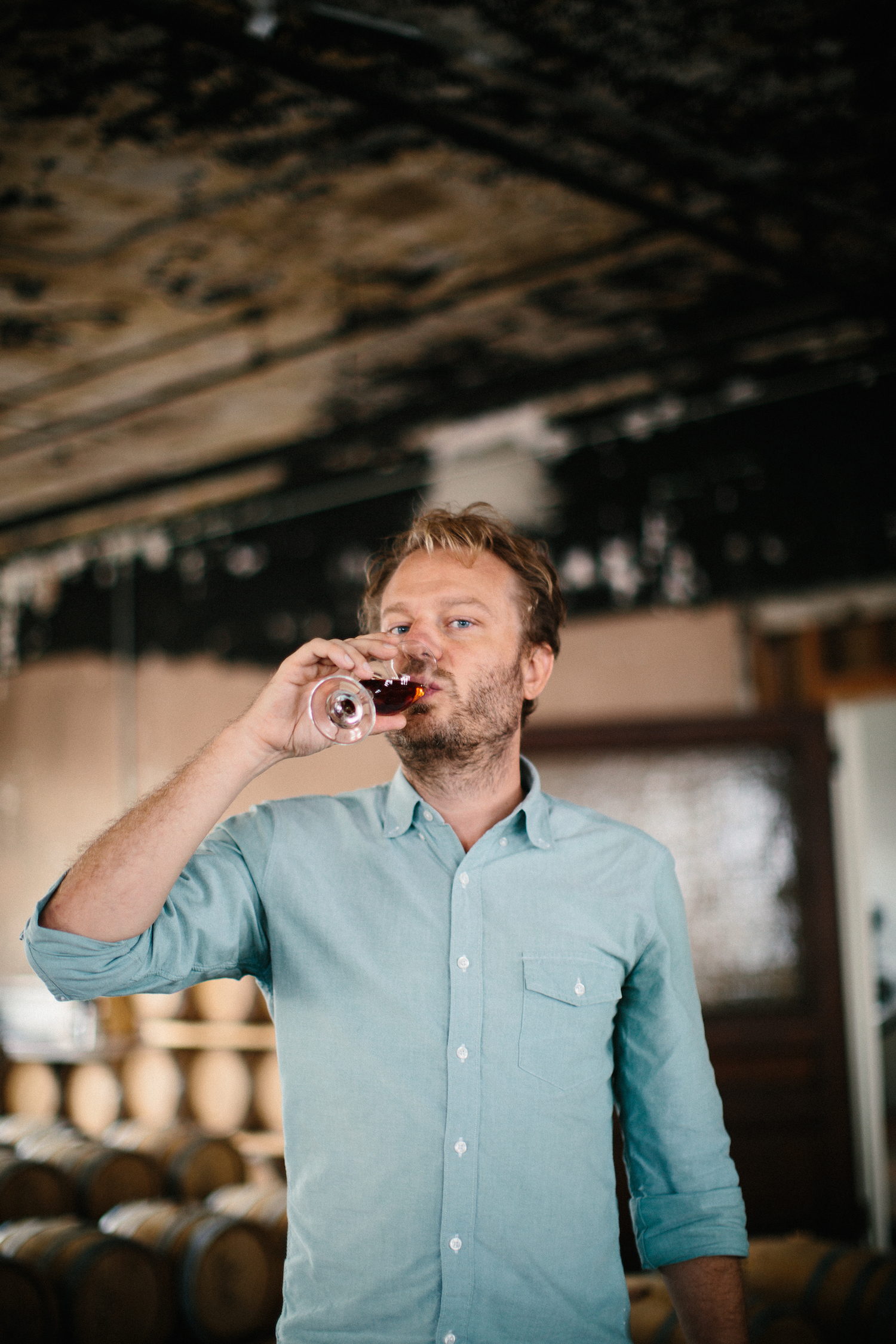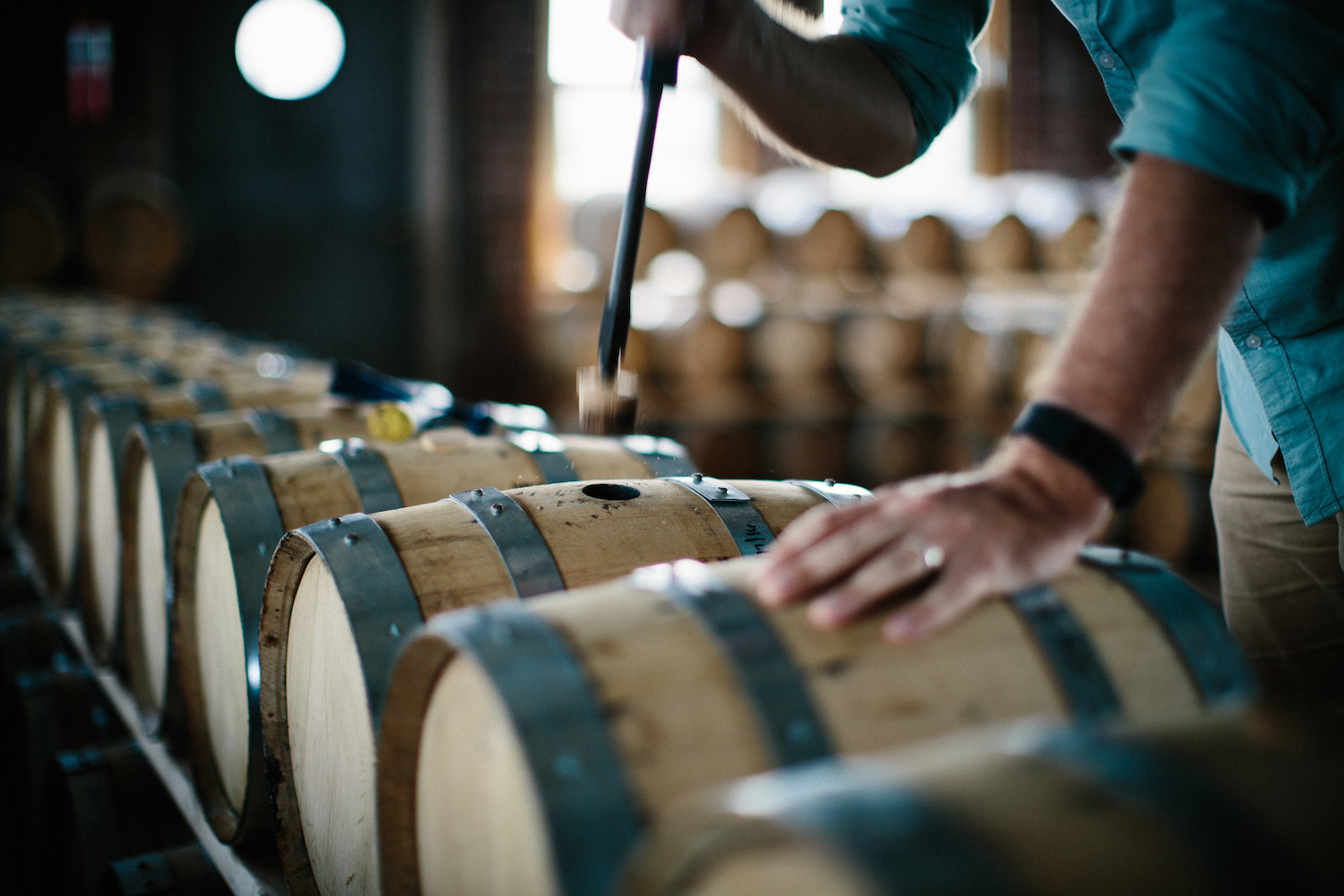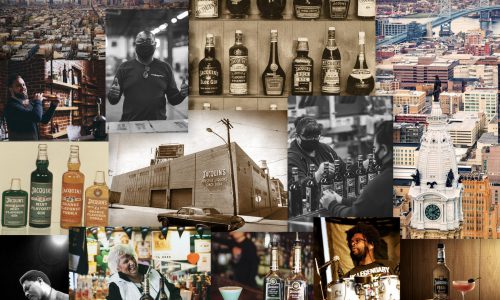Colin Spoelman is the Founder and Master Distiller of New York City’s oldest operating whiskey distillery since prohibition. Located in a historic Brooklyn building more than 100 years old, Kings County Distillery produces handmade moonshine, bourbon, and other whiskeys. We recently toured the whiskey destination that was named the 2016 Distillery of the Year by the American Distilling Institute. We caught up with Spoelman to learn more about the distillery’s mission, his future vision for it, and how he honors his southern roots in the sprawling city of New York.
ForceBrands: Let’s chat first about your background. You grew up in Kentucky, the birthplace of bourbon that produces 95 percent of the world’s supply. How have you respected southern traditions and honored them in New York City?
Colin Spoelman: I’m more from the moonshine part of Kentucky than the bourbon part of Kentucky, but the two are very related — one is the lowbrow version and one is the highbrow version of spirits made from corn. So I first got interested in distilling by traveling back to Kentucky and bringing moonshine with me to share with friends in New York. Maybe 20 years ago, people would have been skeptical or afraid of moonshine, but with the farm-to-table and slow food movement, people have regained an appreciation for things made according to an older tradition or things made at a small scale, and moonshine, if made well, can actually be an excellent spirit. So people were curious and it was fun to share Kentucky moonshine with them, so much so that eventually I got the idea to distill myself.
New York is a very adventurous, culinary culture, so merely making moonshine was not enough — it had to be good, too. So part of my early experimenting in distilling was a lot of trial and error to help determine what makes moonshine (and by extension any whiskey you might age from it) good. I wasn’t necessarily setting out to open a craft distillery, but once I discovered distilling actually isn’t quite as mysterious as whiskey marketing might have you believe, it was a short step to seeing how far the project could go by getting a license. It’s also illegal to distill at home, so there’s that. It was really the only legal way to continue on the path of being a distiller.
FB: What sets the distillery apart from others? You mentioned having a more intense focus on education – mind elaborating on that? And what are some ways you are making the distillery a destination for people visiting the city?
CS: The short answer is flavor. Commercial whiskey is actually quite homogenous in its style and flavor: a lot of bourbons are great, but they aren’t really that different brand to brand, label to label. It’s a question you might not as readily ask a brewer or a winemaker, because there exists a craft tradition in beer and wine, where we intrinsically understand that passionate makers create unusual or interesting booze, but it hasn’t quite made its way into the consciousness for spirits. People don’t yet feel that spirits have the variety of beer and wine, but of course, that’s not true and it’s changing.
But what makes our flavor different are: a focus on organic, local ingredients, open fermentation, narrow cuts aimed at quality over yield, aging techniques that emphasize maturity rather than age, though we are focused on building a warehouse so that over time we’ll have whiskey aged comparably to commercial whiskey. We borrow aspects of production and product design from Scotch whiskey tradition, bourbon tradition, and even craft beer. Our hope is not to replicate a Kentucky bourbon, but to do creative and weird whiskeys — our peated bourbon for example — that defy tradition but take advantage of the fact that we are in a position to anticipate what American craft whiskey will taste like outside of Kentucky. That’s very exciting.
But a lot of what I just described, the processes and the creativity within traditions, are best experienced by seeing the process in action at the distillery. We see about 15,000 visitors each year. About half are from New York, but we see a lot of whiskey enthusiasts from around the world, especially whiskey countries like Ireland, the U.K., and Japan. We’re often the first distillery that most New Yorkers may encounter, so they may not at first realize how unique it is among not just craft but commercial distilleries. So we take a lot of pride in our factory, as it really does determine a lot about what makes us different and unusual among whiskey distilleries.
[media-credit name=”Colin Spoelman” align=”alignleft” width=”300″] [/media-credit]
[/media-credit]
FB: What advice would you give someone interested in starting their own whiskey business?
CS: I wouldn’t get into the business if your expectation is making money. There’s an illusion of a gold rush right now in craft spirits and bourbon, but that has more to do with media attention than actual money being made. I would only get into distilling if you actually want to make whiskey, which is somewhere at the intersection of being a factory worker, a chef, and a storyteller. I would say craft spirits is an increasingly crowded environment to enter, but I have long been an advocate for home distilling. Though illegal, it’s fairly safe to practice as a hobby outside of certain conservative states, and a great way to earn a deeper connoisseurship for whiskey. Start there, and if you find that you have the knack or the compulsion to keep going, that might be a good indication that you are a distiller.
FB: Let’s chat challenges – what have been some of the biggest hurdles you’ve had to overcome when getting Kings County Distillery started?
CS: There are a lot of business challenges around the financing of a distillery since inevitably you are making a product that usually takes at least two years of sitting in a warehouse before it’s ready to be sold, sometimes much more than that. Patience is a tricky thing from a managerial and financial perspective. So financing the project of making whiskey for the future is the most challenging aspect of the business.
FB: What is your hope for the future of the distillery?
CS: I just hope we stay in business long enough to appreciate some of the whiskey that we are holding — 7, 12-year-old bottles, maybe longer. But aside from that, just stay true to who we are, try not to overextend ourselves, and be as much a part of the community that we can be. Breweries and distilleries often evoke the culture of the cities they are in, and we really want to make whiskey for our neighbors, first and foremost.
FB: And finally, just for fun, describe your ideal happy hour. What are you drinking and where are you drinking it?
CS: I was never much of a cocktail person, but New York law changed around distillery tasting rooms to allow for them. Governor Cuomo has been very favorable in supporting legislation that puts us on an equal playing field with wineries and breweries, allowing us to serve drinks as opposed to just tastes. So we have a bar, The Gatehouses, that can only serve whiskey. So we’ve found ways to get creative. In addition to the usual whiskey-based drinks like manhattans, mint juleps, and old fashioneds, we have found that our jalapeño grapefruit moonshine makes a great margarita and Bloody Mary, or our strawberry ginger moonshine is excellent in daiquiris. It’s been fun to try to invent a bar menu made entirely from whiskey.
I would say it depends a little on the season. In the summer, I’d go for a jalapeno moonshine margarita, in the backyard of the Gatehouses. In fall or winter, nothing beats a peated bourbon, neat, hopefully near a fireplace or a campfire — which unfortunately is not a great idea anywhere near a distillery, but our whiskey comes in flasks for portability, so fortunately it goes where you need it.









